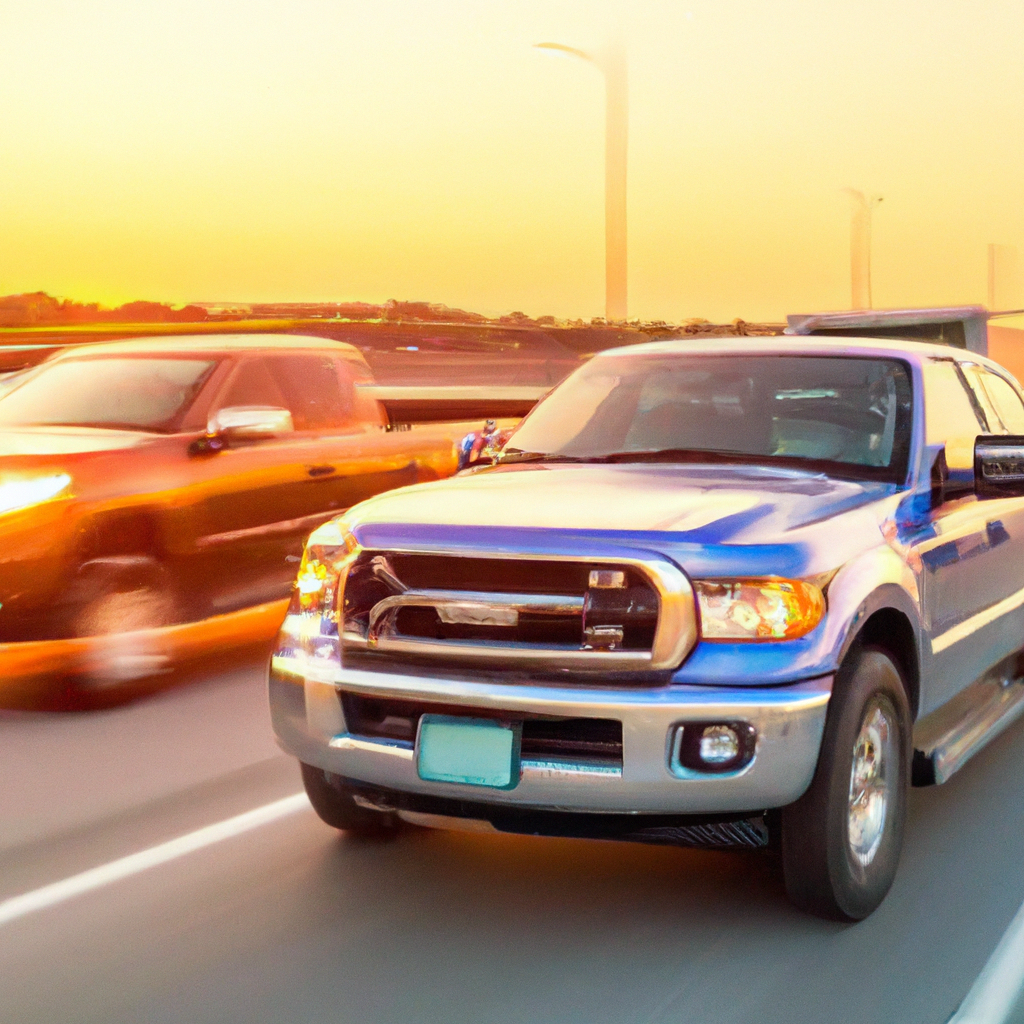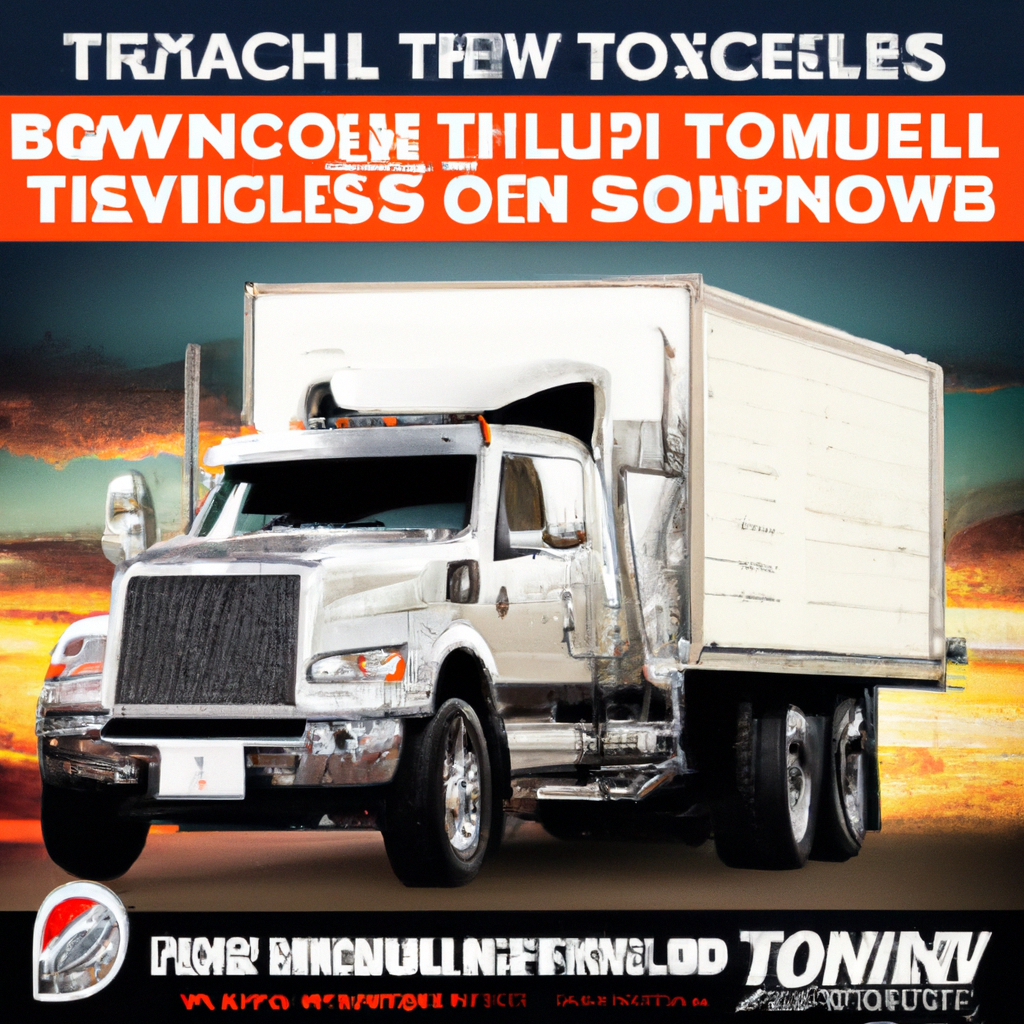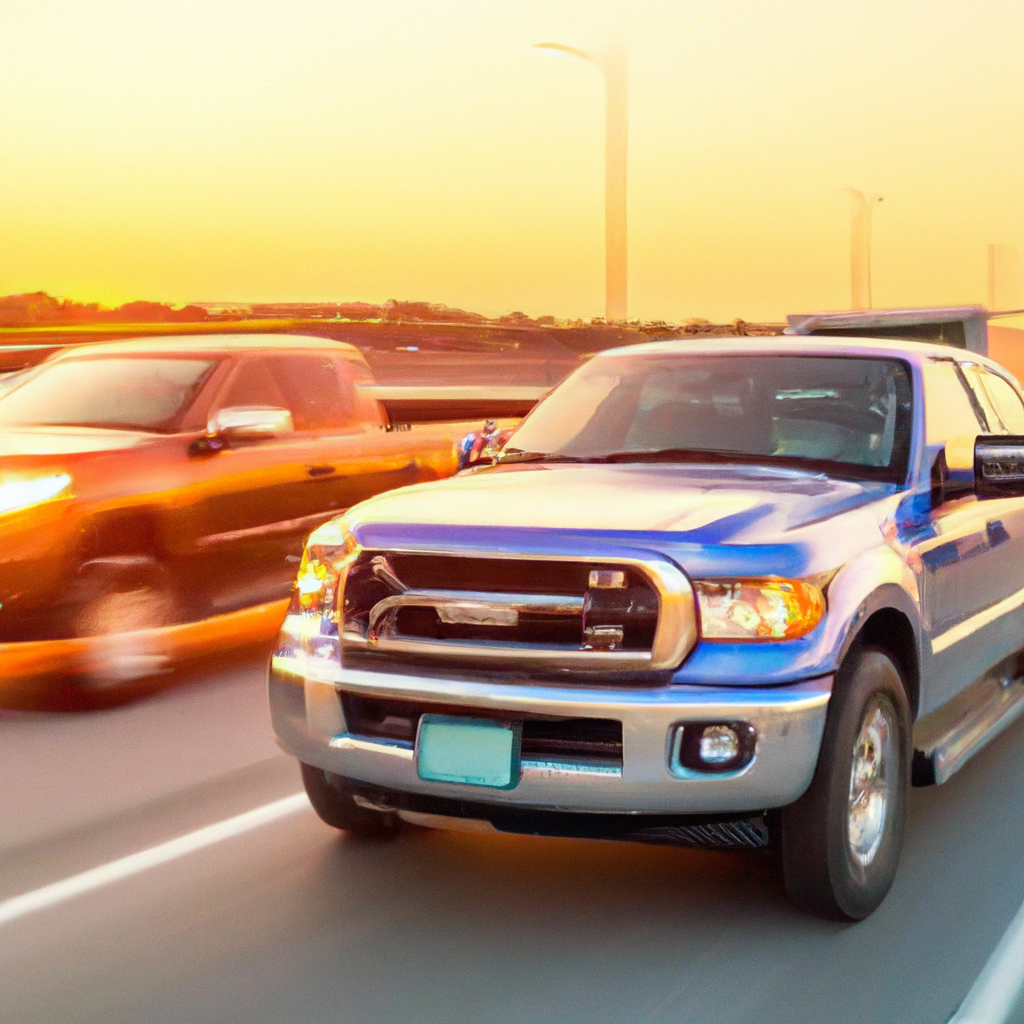When it comes to towing, knowing which gear to drive in is crucial for maintaining safety and control on the road. Determining the appropriate gear depends on various factors such as the weight of the load, terrain conditions, and the type of vehicle you are driving. By understanding the optimal gear selections for towing, you can ensure a smoother and more efficient towing experience while minimizing the risk of damage to your vehicle and load.
Choosing the Right Gear for Towing
Understanding the Importance of Proper Gear Selection
When it comes to towing, choosing the right gear is crucial for a safe and successful journey. The gear you select will directly impact the performance of your vehicle and its ability to handle the added weight of the load. Proper gear selection ensures that your engine and transmission are not put under excessive strain, and it helps maintain fuel efficiency. Additionally, using the appropriate gear for towing minimizes the risk of potential damage to the vehicle or the load being towed. By understanding the importance of proper gear selection, you can make informed decisions and ensure a smooth towing experience.
Factors to Consider When Choosing Gear for Towing
Several factors come into play when deciding which gear to use for towing. One of the most important considerations is the weight of the load. The heavier the load, the lower the gear you will typically need to use. Additionally, the terrain you will be traveling on plays a significant role in gear selection. If you are towing uphill or on uneven terrain, you may need to downshift to a lower gear to gain extra power and control. The type of transmission in your vehicle also influences gear choices. Manual transmission vehicles offer more control over gear selection, while automatic transmissions may have specific towing modes or overdrive options. Other factors to consider include the weather conditions, road surface, and your skill level as a driver. Taking all these factors into account will help you make an informed decision and choose the right gear for towing.
Different Gears for Different Towing Situations
The gear you choose for towing can vary depending on the specific situation. Here are some common towing scenarios and the recommended gears:
Towing in First Gear
When towing heavy loads or going up steep slopes, using first gear can provide the necessary power and control. First gear offers maximum torque, allowing your vehicle to handle the added weight smoothly. However, keep in mind that using first gear continuously may cause your engine to run at higher RPMs, potentially affecting fuel efficiency.
Using Second Gear for Towing
Second gear is ideal for towing on moderately steep inclines or carrying medium-weight loads. It offers a good balance between power and fuel efficiency and provides better control compared to higher gears. If you find yourself struggling to maintain speed or the engine feels strained, downshifting to second gear can help.
Third Gear for Towing
Third gear is suitable for towing lighter loads or on flat terrain. It offers a good balance of power and speed and is commonly used for towing trailers or boats on highways. Third gear can also help improve fuel efficiency by maintaining a consistent speed without overworking the engine.
Tow-Haul Mode in Automatic Manual Transmission
If your vehicle is equipped with an automatic manual transmission, it may have a tow-haul mode. This mode adjusts the shift points and transmission behavior to optimize performance while towing. It typically allows for higher RPMs and holds onto lower gears for longer, providing better torque and engine braking. Engaging the tow-haul mode is recommended when towing heavy loads or on challenging terrain. Consult your vehicle’s manual to learn how to activate this mode and understand its specific features.
Driving in Automatic Transmission
Using Overdrive in Automatic Transmission
When towing in an automatic transmission vehicle, it’s important to understand how the overdrive feature works. Overdrive is a gear ratio that allows for better fuel efficiency by reducing engine RPMs at higher speeds. However, when towing, it’s generally recommended to turn off overdrive. Towing places additional stress on the engine and transmission, and using overdrive can cause the transmission to hunt for gears or shift too frequently. This can lead to overheating and premature wear. Disabling overdrive while towing ensures your vehicle stays in the appropriate gear for better control and reduces strain on the transmission.
Utilizing Tow-Haul Mode in Automatic Transmission
In addition to turning off overdrive, many automatic transmission vehicles offer a tow-haul mode specifically designed for towing. This mode adjusts the transmission’s shifting patterns, shift points, and torque converter lock-up to optimize performance when hauling heavy loads. Tow-haul mode enhances power delivery, provides engine braking to aid in controlling speed on descents, and helps reduce strain on the transmission. Activating tow-haul mode improves the overall towing experience and ensures your vehicle is operating within its intended parameters.

Effects of Incorrect Gear Selection
Strain on Engine and Transmission
Choosing the wrong gear while towing can put excessive strain on both your engine and transmission. If you tow in a gear that is too high, the engine may struggle to maintain speed, leading to unnecessary strain and potential overheating. On the other hand, if you tow in a gear that is too low, the engine may rev at high RPMs, causing undue stress and reducing fuel efficiency. It is essential to select the appropriate gear to ensure the engine and transmission operate smoothly and avoid any potential damage.
Decreased Fuel Efficiency
Using the wrong gear while towing can also significantly impact fuel efficiency. When towing, the added weight increases the load on the engine, requiring more power to maintain speed. If you choose a gear that is too high, the engine may have to work harder and consume more fuel to compensate. Conversely, selecting a gear that is too low, although providing ample power, may lead to constant high RPMs and increased fuel consumption. By choosing the correct gear, you can optimize fuel efficiency and minimize the impact on your wallet.
Potential Damage to the Vehicle
Another consequence of incorrect gear selection while towing is the potential for damage to the vehicle. Using a gear that is too high can cause the engine to struggle, leading to overheating and excessive wear. This can result in costly repairs or even engine failure. Similarly, using a gear that is too low can create excessive strain on the transmission, leading to premature wear and potential damage. By selecting the right gear for towing, you can ensure the longevity of your vehicle and prevent unnecessary expenses.
Safety Tips for Towing in the Right Gear
Understanding Weight Restrictions
One crucial safety aspect of towing is understanding weight restrictions and adhering to them. Exceeding the recommended weight limits can strain the vehicle, affect braking performance, and compromise overall stability. Before towing, consult your vehicle’s manual or contact the manufacturer to determine the maximum recommended towing capacity. Additionally, consider the weight distribution of the load and make sure it is evenly distributed to maintain proper balance while towing.
Braking Distance Considerations
When towing a heavy load, it’s important to remember that braking distances will be significantly increased. The added weight requires a longer distance for the vehicle to come to a complete stop. To ensure safety, maintain a safe following distance and anticipate braking earlier than you would without the load. Understanding and adapting to the increased braking distances helps prevent collisions and rear-end accidents.
Maintaining a Safe Speed
While towing, it’s essential to maintain a safe and appropriate speed. Excessive speed can pose a significant risk, especially when towing a heavy load. Increased speed reduces the time you have to react to potential hazards, and it places additional strain on the vehicle’s components. By driving within the recommended speed limits and adjusting your speed according to road and weather conditions, you can enhance safety and prevent accidents.

Gearing Tips for Uphill Towing
Downshifting for Extra Power
When towing uphill, downshifting to a lower gear can provide your vehicle with the extra power needed to conquer the incline. By downshifting, you increase the engine RPMs and torque output, allowing your vehicle to maintain speed and prevent strain on the engine. Select a gear that provides ample power without causing the engine to overwork.
Maintaining a Consistent Speed
To ensure a smooth uphill towing experience, it’s crucial to maintain a consistent speed. Shift to a lower gear that allows the engine to operate at a steady RPM without excessive strain. This fosters better control over your vehicle and minimizes the risk of stalling or losing momentum on the ascent.
Keeping the Engine Cool
Uphill towing can place a significant demand on the engine, potentially leading to increased heat buildup. To prevent overheating, ensure that your vehicle’s cooling system is in good working order. Consider installing an auxiliary transmission cooler if your vehicle does not come equipped with one. Additionally, avoid excessive idling before tackling an incline, as this can further contribute to heat buildup. Regularly monitor the engine temperature gauge while towing uphill and pull over if you notice any signs of overheating.
Gearing Tips for Downhill Towing
Avoiding Overheating Brakes
When towing downhill, one of the main concerns is avoiding overheating of the brakes. Continuous brake application can generate excessive heat, potentially causing brake fade or even failure. To prevent this, it is essential to choose the appropriate gear and use engine braking techniques. Downshifting to a lower gear engages the engine to slow down the vehicle, reducing the reliance on the brakes.
Using Lower Gears to Control Speed
Downhill towing requires careful speed control to ensure safety. Utilize lower gears to maintain a controlled descent without relying solely on the brakes. Lower gears allow the engine to hold back the vehicle’s momentum, reducing the need for excessive braking and minimizing the risk of overheated brakes. Shift to a lower gear that provides sufficient engine braking while maintaining a safe and steady speed.
Engine Braking Technique
Engine braking is an effective technique when towing downhill, as it helps maintain control and reduces strain on the brakes. To engage engine braking, shift to a lower gear while gently applying the brakes to slow down the vehicle. Once the desired speed is reached, release the brakes and allow the engine’s compression to slow down the vehicle further. This technique not only minimizes brake wear but also helps you maintain stability and control while descending.
Towing Techniques for Different Vehicles
Towing with a Car
When towing with a car, it’s essential to ensure that the vehicle is equipped to handle the load and has the necessary towing capacity. Consult your vehicle’s manual or contact the manufacturer to determine the recommended maximum towing weight for your car. Additionally, ensure that the hitch and towing equipment are properly installed and rated for the load. Lastly, choose the appropriate gear for towing based on the factors previously discussed.
Towing with an SUV or Pickup Truck
SUVs and pickup trucks are often used for towing due to their higher towing capacity and robust build. When towing with these vehicles, it’s crucial to distribute the weight evenly and secure the load properly. Ensure that the trailer hitch is compatible with your vehicle and can handle the weight being towed. Choose the appropriate gear for towing by considering the load, terrain, and other factors mentioned earlier to optimize performance and safety.
Towing with a Motorhome or RV
Motorhomes and RVs come with a significant towing capacity, making them suitable for towing various types of trailers, boats, or cars. However, it is essential to understand the limitations and specific requirements of your motorhome or RV. Check the vehicle’s manual for the recommended towing gear and familiarize yourself with any additional precautions or considerations. Ensure that the brakes, suspension, and tires of both the towing vehicle and the towed load are in proper working condition. Following these guidelines will help ensure a safe and successful towing experience with your motorhome or RV.
Considering External Factors for Gear Selection
Road Conditions and Terrain
When it comes to gear selection for towing, road conditions and terrain play a crucial role. Uneven surfaces, inclines, or winding roads require careful consideration and possibly a lower gear to gain better control and power. For example, if you anticipate encountering steep uphill sections, it’s best to downshift to a lower gear beforehand. Conversely, on level highways, you may be able to tow comfortably in a higher gear without compromising performance.
Weather and Visibility Conditions
Weather and visibility conditions should also be taken into account when selecting the appropriate gear for towing. Adverse weather, such as heavy rain, strong winds, or snow, can affect road traction and vehicle stability. In these conditions, it’s advisable to downshift to a lower gear to maintain better control and responsiveness. Similarly, in low visibility situations, such as fog or darkness, selecting a lower gear allows for increased engine braking and better maneuverability.
Traffic and Other Drivers
The surrounding traffic and behavior of other drivers should be considered when choosing the right gear for towing. If you anticipate frequent stops or traffic congestion, it may be more practical to choose a lower gear to ensure smoother acceleration and deceleration. Additionally, maintaining a safe speed and following distance is crucial when towing, as it allows other drivers to anticipate your actions and prevents accidents or sudden maneuvers.
Consulting the Vehicle Manual
Importance of Referencing the Manual
A reliable source of information for choosing the correct gear for towing is your vehicle’s manual. The manual provides detailed instructions, guidelines, and recommendations specific to your vehicle’s make and model. It outlines the towing capacity, gear selection, and any special considerations your vehicle may require. It is essential to refer to the manual to ensure you are following the manufacturer’s recommendations and guidelines for safe and efficient towing.
Manufacturer Recommendations for Towing Gear
Manufacturers understand the capabilities and limitations of their vehicles, and they provide specific recommendations regarding gear selection for towing. These recommendations are based on extensive testing and engineering expertise to ensure optimal performance and safety while towing. Following the manufacturer’s recommendations for towing gear ensures that you are using the gears that best suit your vehicle’s design and capabilities.
Specifics for Your Vehicle
Each vehicle has its unique characteristics and towing capabilities. Therefore, it is crucial to consider the specifics of your vehicle when choosing the right gear for towing. Factors such as engine power, torque output, transmission type, and cooling system capacity can all influence the gear selection process. By understanding the specifics of your vehicle, you can make informed decisions and choose the most appropriate gear for a successful towing experience.
In conclusion, choosing the right gear for towing is essential for a safe and efficient journey. Factors such as load weight, terrain, transmission type, and external conditions all impact gear selection. Understanding the importance of proper gear selection helps prevent strain on the engine and transmission, maintain fuel efficiency, and avoid potential damage to the vehicle. By following safety tips, such as understanding weight restrictions, maintaining a safe speed, and considering external factors, you can ensure a secure towing experience. Whether you are operating a manual or automatic transmission vehicle or towing with different types of vehicles, proper gear selection is crucial for a successful haul. Always consult your vehicle manual and follow manufacturer recommendations to ensure you are towing in the most appropriate gear for your vehicle’s capabilities and the specific towing situation.
